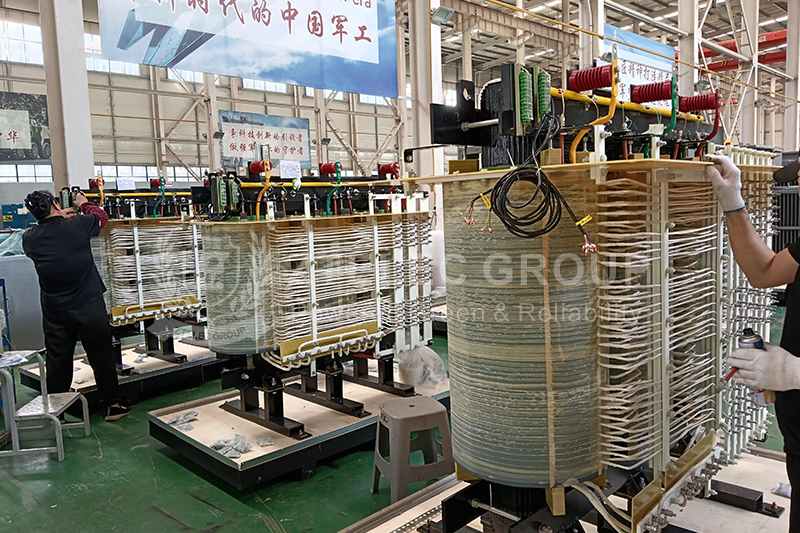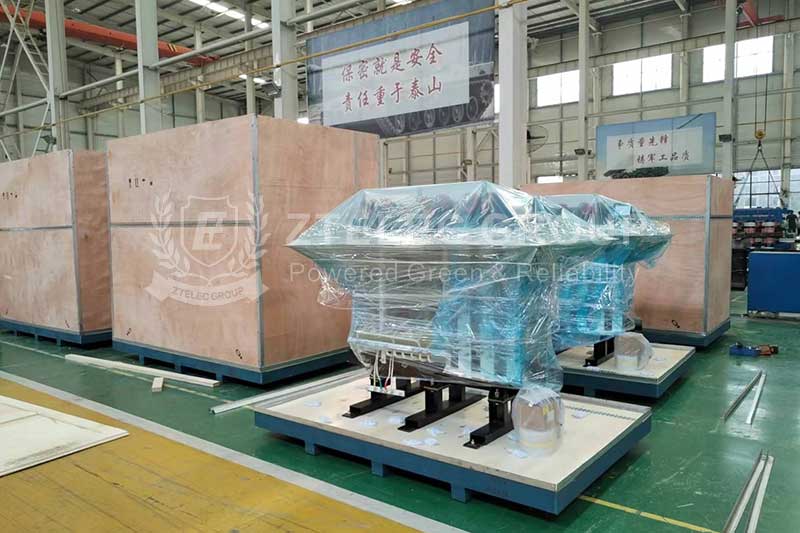What to do if the transformer burns out
2024-01-03 11:45 | By: ZTELEC-www.ztelecgroup.com | 133click
When the transformer winding is short-circuited, the resulting phenomena include excessive temperature of the transformer, burnt smell, smoke, reduced output voltage, unstable output voltage, etc. If these phenomena are found, the power supply should be cut off immediately and checked.
1. The main causes of short circuit in transformers are:
Because the transformer is damp and moldy inside, the insulation layer will be damaged over time, causing serious leakage or short circuit; or due to the aging of the transformer insulation material and the reduction of insulation performance, it will cause insulation breakdown and short circuit.
In addition, a sudden increase in power supply voltage can also cause insulation breakdown and winding short circuit.
When the transformer is open, there is no output voltage, and the input current on the primary side is very small or no input current. The main reasons for circuit breakage include: external lead breakage; desoldering of the lead wire and solder tab; internal mold breakage of the wire package after collision and moisture.
Once the cause of the transformer failure is found, it can be repaired. For external faults, if the wire is broken or desoldered, the wire can be re-soldered or replaced with a new one; if there is a spark between the lead wire terminal and the iron core or a spark between the terminals causing the insulation to burn, the terminals should be properly pulled away from each other. Core, or the distance between terminals; if the insulation layer is burnt, it should be replaced or the burnt part should be removed and sealed with epoxy resin glue.
For transformers that are short-circuited due to moisture or have large no-load losses, if the coil has been short-circuited, the short-circuited wire package must be removed and re-wound. Generally, transformers that have not been short-circuited due to moisture must not be energized to avoid breakdown of the insulation layer. They can be placed in a drying oven for drying to restore its insulation performance.
If the transformer has a large no-load loss but normal insulation resistance (between coils, between coils and iron cores), the core may have poor quality, large iron loss, or the coil may have a local short circuit, short circuit testing can be used Check with the instrument and troubleshoot before continuing to use it.
2. How to repair the transformer:
When a fault such as wire breakage or short circuit occurs inside the transformer and the transformer must be disassembled for repair, follow the steps below.
The first step is to disassemble the iron core. Transformers are often filled with asphalt, wax and other materials. Before disassembly, they should be heated to melt them away from the transformer. In addition, the transformer leads should be welded from the terminals, remove the fixed plywood, use a screwdriver to pry up the first piece of silicon steel, and then use pliers. Pull out the silicon steel sheets one by one. When removing the silicon steel sheet, care must be taken not to damage the coil leads and to avoid breakage and bending of the silicon steel sheet. Then, collect the removed silicon steel sheets together and wrap them in paper to avoid loss and damage to the insulation.
The second step is to remove the coil. After taking out the iron core, first check the appearance of the coil to see if there is any damage on the appearance, and then use the insulation resistance meter again to check which coil the fault occurs in order to dismantle it purposely. When disassembling, pay attention to note down the interlayer insulation, wire diameter, number of turns and layers per layer, etc. for reference when rewinding. At the same time, attention should be paid to protecting the surface of the wire insulation paint for reuse; special attention should also be paid to finding and discovering the causes of coil short circuits and open circuits. After the faulty part is found and dealt with, it can be re-wound according to the original winding method, and after winding and repair, a comprehensive test and inspection can be carried out. You can continue to use it only after all indicators meet the requirements.
3. Inspection after transformer repair:
Whether the transformer still has design and installation defects;
Check whether the load current and operating voltage of the transformer are normal;
Check whether there is oil leakage in the transformer, and whether the oil level, oil color, and temperature exceed the allowable values. The upper oil temperature of oil-immersed self-cooling transformers is generally below 5°C. Strong oil air-cooled and strong oil water-cooled transformers should be painted at 5 Below ℃;
Check whether the high and low voltage porcelain bushings of the transformer are clean and whether there are cracks, damage and traces of flashover discharge;
Check the transformer terminals for poor contact or overheating;
Check whether the operating sound of the transformer is normal; there is a uniform buzzing electromagnetic sound during normal operation. If there is a crackling discharge sound inside, it may be a breakdown of the winding insulation. If there is uneven electromagnetic sound, it may be a breakdown of the iron core. The core bolt or nut is loose.
Check whether the hygroscopic agent of the transformer has reached a saturated state;
Check whether the oil cut-off door of the transformer is normal, and whether the cut-off door leading to the gas relay and the radiator are open;
Check whether the explosion-proof tube diaphragm of the transformer is complete and whether the diaphragm glass is marked with a "ten"; Check whether the cooling device of the transformer is operating normally, whether the temperature of the heat pipe is uniform, and whether there is any blockage in the oil pipe;
tags:Price of a 1600kVA 10kV Cast Resin Dry-Type Transformer35kV dry-type transformer protection10kV oil-immersed transformer110 kV oil-immersed transformerOil-Immersed Transformer Maintenance
- more+releated article
- 2025-12-13How to Select and Use Phenolic Cloth-base Lami
- 2025-12-13How Much Does Bakelite Sheet Cost? 2025 Price
- 2025-12-13Why are most 3240 epoxy boards yellow?
- 2025-12-13What are the Main Applications of FR4 Epoxy Bo
- 2025-12-13Why Does the Price of Insulating Paperboard Va
- 2025-12-13Heat-Resistant DDP Insulation Paper
- 2025-12-13Comparison of Heat-Resistant DDP Insulating Pa
- 2025-12-13G10 and FR4 Epoxy Boards: Commonly Used for Ge
- 2025-12-13The Price of Heat-Resistant DDP Insulation Pap
- 2025-12-13How to Choose Epoxy Laminate Materials for Gen





